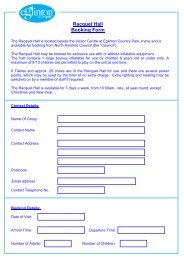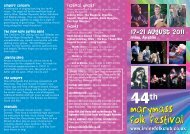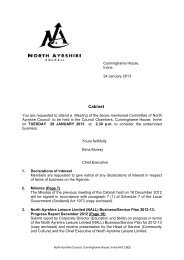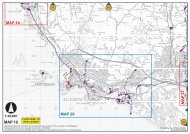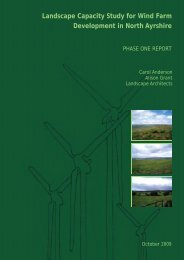Combined Executive Agenda 120410.pdf - North Ayrshire Council
Combined Executive Agenda 120410.pdf - North Ayrshire Council
Combined Executive Agenda 120410.pdf - North Ayrshire Council
You also want an ePaper? Increase the reach of your titles
YUMPU automatically turns print PDFs into web optimized ePapers that Google loves.
1. Introduction<br />
1.1 Introduction<br />
<strong>North</strong> <strong>Ayrshire</strong> <strong>Council</strong> has successfully introduced a number of initiatives to<br />
achieve the targets for 2010 in respect of recycling and reducing the amount<br />
of waste disposed of at landfill. The continued development of recycling<br />
services and waste management policies has ensured that the <strong>Council</strong> is well<br />
placed to achieve the 2013 landfill reduction target. However current national<br />
plans and policies set down ever increasing and more onerous targets for the<br />
period up to 2025. The <strong>Council</strong> must, therefore, ensure that it has sufficient<br />
plans in place to meet these legislative and policy requirements.<br />
This waste strategy is for the period 2012 – 2016 and will be reviewed at<br />
regular intervals. It compiles detailed research and information in the following<br />
chapters:-<br />
� Key Drivers – A review of the issues that will influence the future direction<br />
of waste management services;<br />
� Existing Waste Management Service – Description of current services<br />
provided and associated performance;<br />
� Waste Arisings and Composition – Detailed analysis of the waste<br />
managed by the <strong>Council</strong>;<br />
� Gap Analysis and Areas for Improvement – The areas where the service<br />
needs to improve and how these can be met to achieve the requirements<br />
of the national waste agenda and local requirements;<br />
� Recommended Actions – Recommendations and an implementation plan;<br />
� Future Service Delivery – A review of the financial implications and<br />
performance gains anticipated.<br />
1.2 <strong>North</strong> <strong>Ayrshire</strong><br />
<strong>North</strong> <strong>Ayrshire</strong> <strong>Council</strong> is situated around 25 miles south-west of Glasgow<br />
with a population of 135,180 and 66,461 domestic properties. Its total area is<br />
some 340 square miles, almost equally divided between the mainland and the<br />
islands of Arran and Cumbrae. It has total coastline of 140 miles (42 on<br />
mainland, 98 on islands). 92% of the area is classed as countryside, ranging<br />
from 85% on the mainland to 99% on Arran).<br />
Over three-quarters of the population live in urban areas or accessible small<br />
towns, with the remaining population living in rural areas – 4.8% of the total<br />
population living in remote or very remote rural areas.<br />
In 2009 the Scottish Index of Multiple Deprivation identified that 43 of <strong>North</strong><br />
<strong>Ayrshire</strong>’s 179 data zones are categorised as being in the worst 15% in<br />
Scotland and includes 23.1% of the population. 20 of these data zones are<br />
located in Irvine/Kilwinning, 19 in the Three Towns, and 4 in the Garnock<br />
Valley. The most deprived zone is Ardrossan.<br />
2<br />
40



